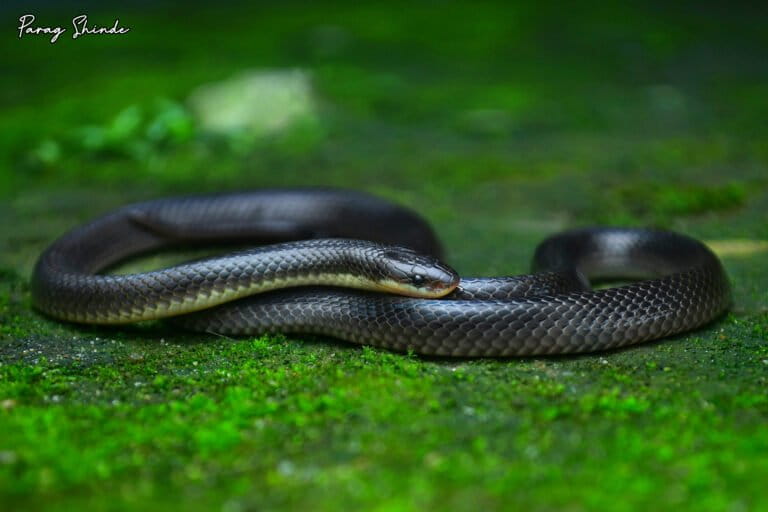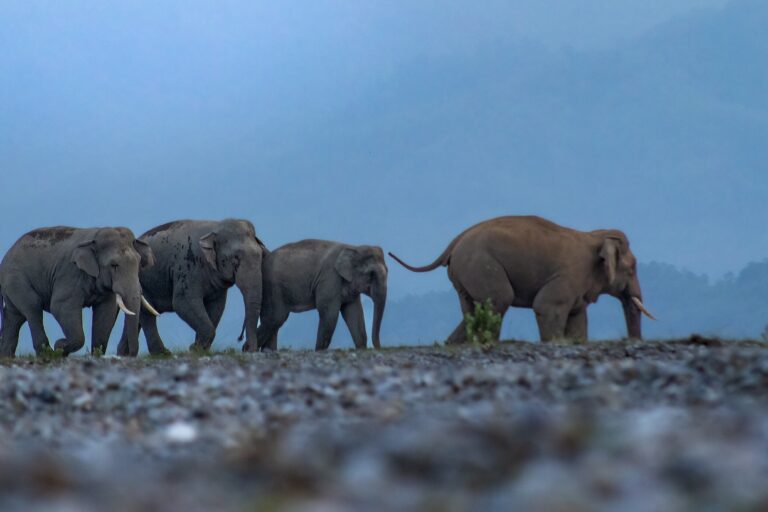- Seventy-eight out of 1353 bird species in India are endemic to the country; three of them are critically endangered, according to a new book by the Zoological Survey of India.
- The book contains details such as the etymology of bird names and their historical relevance as well as maps indicating their distribution.
- Habitat loss, degradation and fragmentation are found to be the main reasons for the decline of bird species. Climate change too, is contributing to it.
India is home to 12.40% of the global bird diversity; 1,353 bird species out of 10,906 documented globally are from India. The country has 78 endemic bird species. Of the bird species existing in the country, 28 are found only in the Western Ghats, 25 in the Andaman and Nicobar Islands, four in the Eastern Himalayas, and one each in the Southern Deccan Plateau and Central Indian Forest. This is some of the information in a new book, 75 Endemic Birds of India, by the Zoological Survey of India (ZSI). Authored by Dhriti Banerjee, Amitava Majumder and Anindya Naskar, the book commemorates 75 years of Indian independence.
Speaking to Mongabay-India about the motivation behind bringing out a book on the endemic bird species of the country, Amitava Majumder said that despite the rich bird diversity, there is a scarcity of information about these birds and their habitats. The idea was to bring attention to these unique bird species to raise awareness and encourage conservation efforts, he said.

The book takes the readers on an exploration of India’s avifauna through engaging descriptions, magnificent visuals, and important ecological insights. It packs details, including the etymology of bird names and their historical relevance along with vital facts such as subspecies differences, distinguishing traits, preferred habitats, breeding habits and food preferences. The book also comes with maps indicating species distribution.
The book also outlines the endemicity of Western Ghats which is home to species such as Malabar grey hornbill (Ocyceros griseus), Malabar parakeet (Psittacula columboides), Ashambu laughingthrush (Montecincla meridionalis), white-bellied sholakili (Sholicola albiventris), Nilgiri pipit (Anthus nilghiriensis) and more. Some birds endemic to another bird paradise, the Andaman and Nicobar Islands, include Nicobar megapode (Megapodius nicobariensis); Nicobar serpent eagle (Spilornis klossi) and Andaman crake (Rallina canningi).

Special conservation efforts needed to protect endemicity
Director of ZSI, Dhriti Banerjee said that due to their limited distribution, endemic species require specific conservation efforts to prevent their decline. “Our aim is to popularise the value of birds pivotal in maintaining ecological balance. This publication endeavours to enrich people’s understanding of their importance while also highlighting our country’s vibrant fauna,” she said.

The ZSI carries out two main types of surveys — species-specific ones as well as region or protected areas-focused surveys — throughout the year. While there are no endemic bird-specific surveys conducted for the book, the results were collated from regular surveys that include endemic species as well.
Among the 78 endemic bird species, 25 are classified as threatened as per the International Union for Conservation of Nature (IUCN) categorisation. Specifically, three species are listed as critically endangered, five as endangered, and 17 as vulnerable. Additionally, 11 endemic species are categorised as near threatened. Out of 78 species, the book refers to three endemic species — Manipur bush quail (Perdicula manipurensis), Himalayan quail (Ophrysia superciliosa) and Jerdon’s courser (Rhinoptilus bitorquatus) — only in the introduction as they have not been sighted in several decades, a serious concern for ecologists, informed Majumder.
Habitat loss, climate change contribute to species decline
Majumder considers habitat loss, fragmentation and degradation as the main reasons for the loss of bird diversity in India as endemic birds are uniquely adapted to specific, often small-scale ecosystems and any threat to the integrity of these ecosystems poses a grave threat to them.
“Among these species, we particularly want to highlight the Bugun liocichla (Liocichla bugunorum), white-bellied sholakili, Ashambu laughingthrush (Montecincla meridionalis) and the Wayanad laughingthrush (Garrulax delesserti) and some others. These birds are very much habitat specific and found in very small pockets of India,” he said. The Bugun liocichla, for instance, depends on small and specific forest ecosystems and if that particular habitat were lost, the species too would be lost. Similarly, the white-bellied sholakili, Ashambu laughingthrush, and the Wayanad laughingthrush are restricted to their respective ranges in the Western Ghats that are facing challenges from urbanisation and rubber plantations.

Climate change, too, is having a negative effect on the birds. To fully evaluate its impact, however, long-term monitoring and studies are required, said Majumder. “While the effects of climate change are undoubtedly a vital concern for wildlife, including birds, they do not operate in isolation. Habitat loss, stemming from various human activities, can disrupt the ecosystems that birds rely on for nesting, foraging, and shelter. This can lead to population declines and, in some cases, endangerment or extinction of species,” he added.
The ZSI is considering implementing more focused surveys exclusively for endemic species to gain deeper insights into their specific needs and challenges to aid conservation efforts.
Read more: [Book review] Birds of the mountains feature in a new book on birds on postage stamps
Banner image: Malabar hornbill. The Zoological Survey of India carries out two main types of surveys — species-specific ones as well as region or protected areas-focused surveys — throughout the year. Photo by Amitava Majumder.














